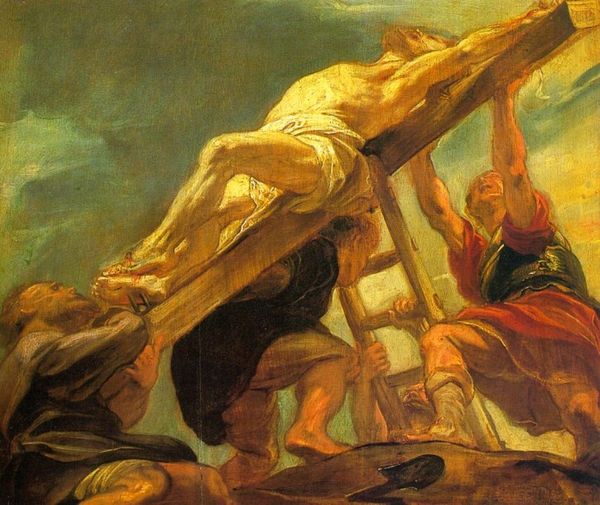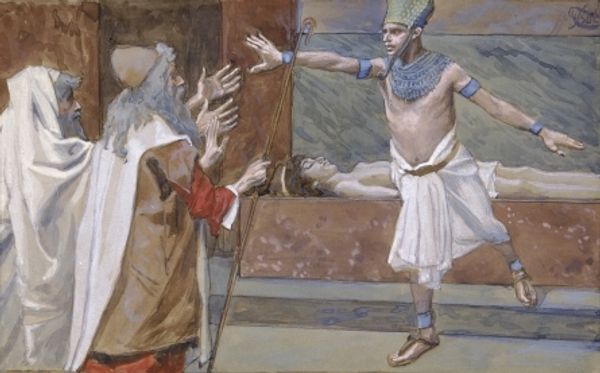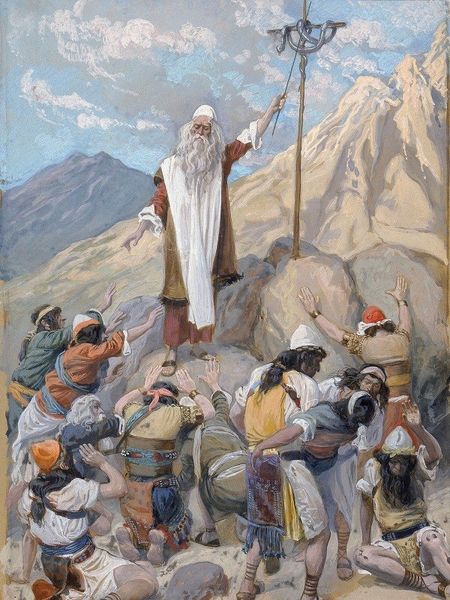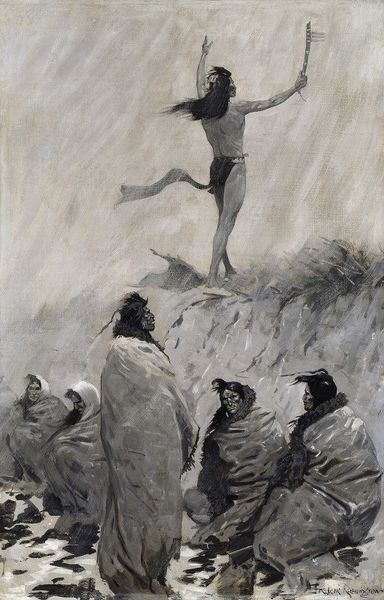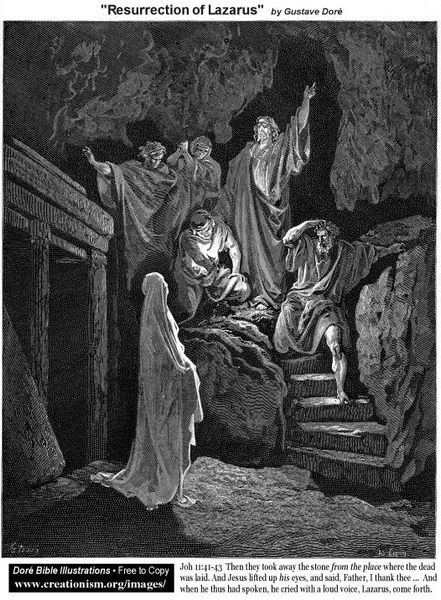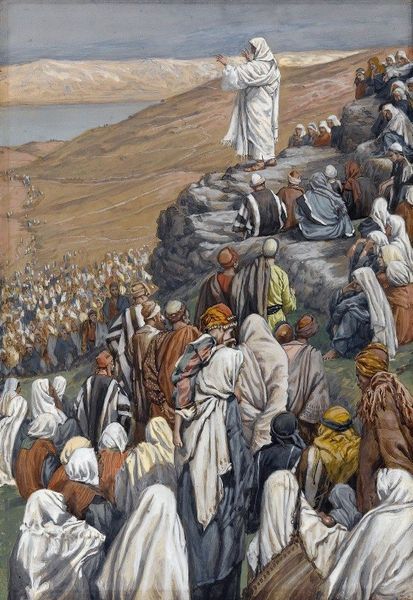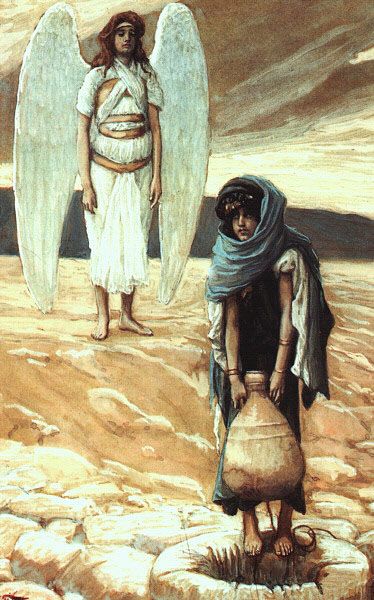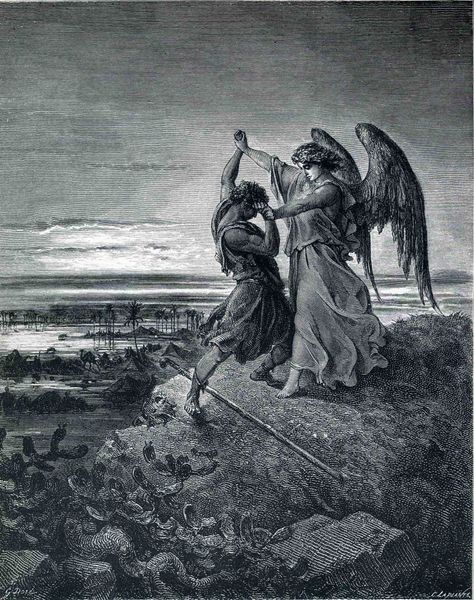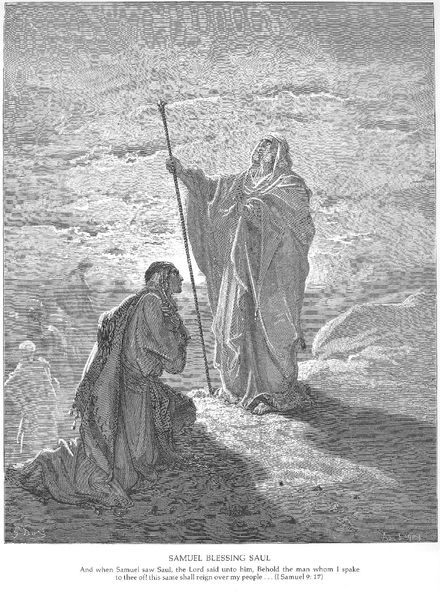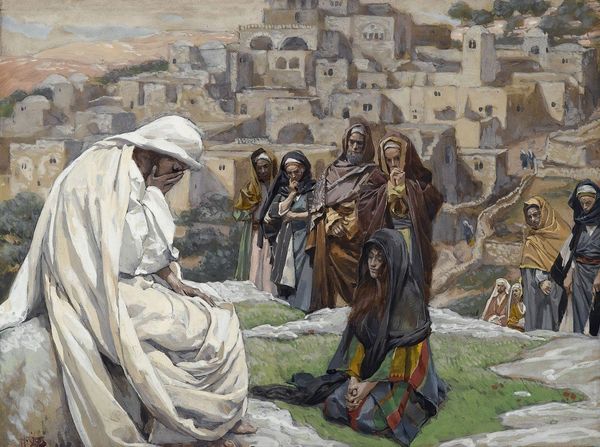
Copyright: Public Domain: Artvee
James Tissot made this watercolor painting of Moses in the late 1800s, using a technique that emphasizes layered washes of pigment. Watercolor, traditionally prized for its delicate effects, here takes on a narrative charge. The way Tissot has used the medium, building up translucent layers, allows light to suffuse the scene, accentuating the drama of the moment. You can see the artist used this method to emphasize the weight of the stone tablets Moses is about to destroy, highlighting the tension between divine law and human failing. The way the pigment settles into the paper creates subtle textures that mimic the rough terrain of the mountain, grounding the scene in a tangible reality. The artist's choice of watercolor also reflects a wider trend in the 19th century of artists exploring the expressive potential of so-called 'lesser' media, challenging the traditional hierarchy of art forms. In doing so, Tissot invites us to consider the social and cultural contexts that shape our understanding of both art and religious narratives.
Comments
No comments
Be the first to comment and join the conversation on the ultimate creative platform.
